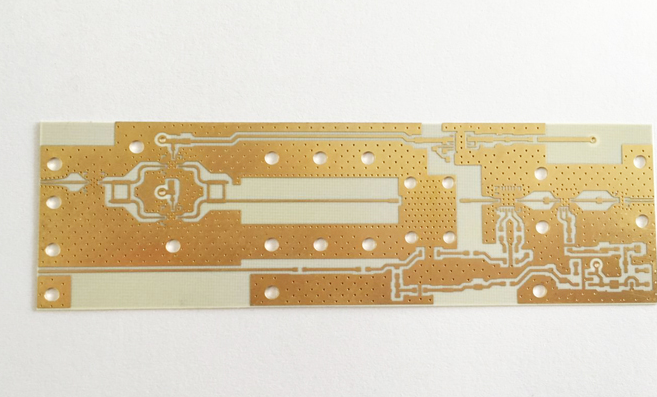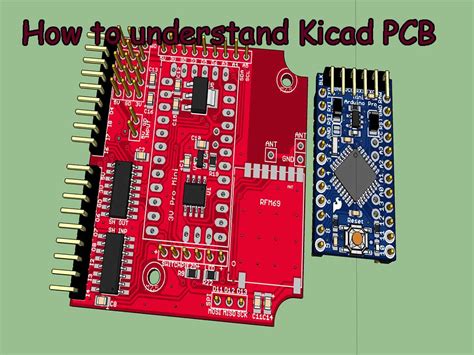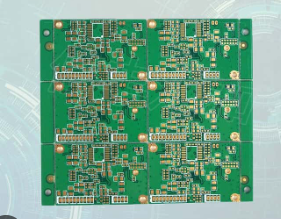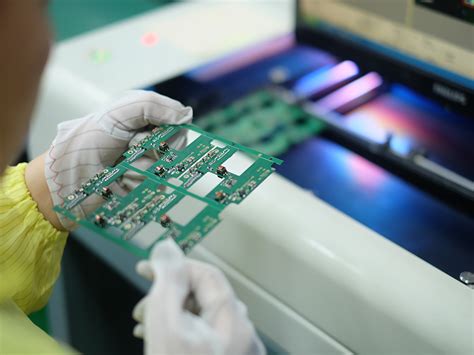What is rogers pcb material
Introduction To Rogers PCB Material: Benefits And Applications
Rogers PCB material is a high-frequency laminate used in the manufacturing of printed circuit boards (PCBs). Known for its superior performance in high-frequency applications, Rogers material is a preferred choice in industries where reliability and precision are paramount. Unlike traditional FR-4 materials, Rogers laminates offer a unique combination of electrical, thermal, and mechanical properties that make them suitable for a wide range of advanced applications.
One of the primary benefits of Rogers PCB material is its excellent dielectric properties.
The dielectric constant (Dk) of Rogers laminates is stable over a wide frequency range, which is crucial for maintaining signal integrity in high-frequency circuits. This stability ensures that the signal speed and impedance remain consistent, reducing the risk of signal loss and distortion. Additionally, Rogers materials exhibit low dielectric loss, which means that they can efficiently transmit signals with minimal energy dissipation. This characteristic is particularly important in applications such as microwave and RF circuits, where signal clarity and strength are critical.
Another significant advantage of Rogers PCB material is its thermal management capabilities.
High-frequency circuits often generate substantial amounts of heat, which can adversely affect performance and longevity. Rogers laminates have a high thermal conductivity, allowing them to dissipate heat more effectively than traditional materials. This property helps in maintaining the operational stability of the circuit and prolongs the lifespan of the components. Moreover, Rogers materials have a low coefficient of thermal expansion (CTE), which means they undergo minimal dimensional changes with temperature fluctuations. This stability is essential for maintaining the structural integrity of the PCB, especially in environments with varying temperatures.
The mechanical properties of Rogers PCB material also contribute to its widespread use.
These laminates are known for their durability and resistance to mechanical stress, making them suitable for applications that require robust and reliable performance. The material’s rigidity ensures that the PCB maintains its shape and functionality even under challenging conditions. Furthermore, Rogers laminates are compatible with various fabrication processes, including advanced techniques like laser drilling and sequential lamination. This versatility allows manufacturers to create complex and high-density circuit designs with precision and efficiency.
Rogers PCB material finds applications in a diverse array of industries.
In the telecommunications sector, it is used in the production of antennas, satellite communication systems, and base station equipment. The aerospace and defense industries rely on Rogers laminates for radar systems, avionics, and other critical communication devices. Additionally, the automotive industry utilizes these materials in advanced driver-assistance systems (ADAS) and other high-frequency applications. The medical field also benefits from Rogers PCB material, particularly in diagnostic equipment and imaging systems where precision and reliability are crucial.
In conclusion, Rogers PCB material offers a range of benefits that make it an ideal choice for high-frequency and high-performance applications. Its superior dielectric properties, thermal management capabilities, and mechanical strength set it apart from traditional PCB materials. The versatility and reliability of Rogers laminates have made them indispensable in various industries, from telecommunications and aerospace to automotive and medical fields. As technology continues to advance, the demand for high-quality PCB materials like Rogers is expected to grow, further solidifying its position as a leader in the field of high-frequency laminates.

Comparing Rogers PCB Material With Other Substrates
Rogers PCB material is a high-frequency laminate used in the manufacturing of printed circuit boards (PCBs). Known for its superior performance in high-frequency applications, Rogers material is often compared to other substrates such as FR-4, polyimide, and ceramic. Understanding the differences between these materials is crucial for engineers and designers who aim to optimize the performance and reliability of their electronic devices.
One of the primary distinctions between Rogers PCB material and other substrates is its dielectric constant (Dk).
Rogers materials typically have a lower and more stable dielectric constant compared to FR-4, which is the most commonly used PCB substrate. This stability is essential for high-frequency applications, as it ensures consistent signal integrity and minimizes signal loss. In contrast, FR-4 materials can exhibit variations in their dielectric constant, leading to potential signal degradation and performance issues in high-frequency circuits.
Another significant factor to consider is the dissipation factor (Df), which measures the energy loss in a dielectric material.
Rogers PCB materials generally have a lower dissipation factor than FR-4, meaning they exhibit less energy loss and better efficiency in high-frequency applications. This characteristic is particularly important in applications such as RF and microwave circuits, where minimizing energy loss is critical for maintaining signal strength and overall system performance.
Thermal management is another area where Rogers PCB material outperforms many other substrates.
Rogers materials typically have a higher thermal conductivity than FR-4, allowing for better heat dissipation and improved thermal management. This property is crucial in high-power applications, where excessive heat can lead to component failure and reduced reliability. Additionally, Rogers materials often have a higher glass transition temperature (Tg) compared to FR-4, which means they can withstand higher operating temperatures without degrading.
When comparing Rogers PCB material to polyimide substrates, one must consider the specific application requirements.
Polyimide materials are known for their excellent thermal stability and flexibility, making them suitable for flexible circuits and high-temperature environments. However, they may not offer the same level of electrical performance as Rogers materials in high-frequency applications. Therefore, the choice between Rogers and polyimide substrates depends on the specific needs of the application, such as the importance of electrical performance versus thermal stability and flexibility.
Ceramic substrates, on the other hand, offer exceptional thermal and electrical properties, making them ideal for high-power and high-frequency applications.
However, they are often more expensive and less flexible than Rogers materials. While ceramic substrates provide excellent performance, their higher cost and rigidity can be limiting factors in certain applications. Rogers materials offer a balanced combination of performance, cost, and flexibility, making them a popular choice for many high-frequency applications.
In conclusion, Rogers PCB material stands out for its superior electrical performance, thermal management, and overall reliability in high-frequency applications. While other substrates like FR-4, polyimide, and ceramic each have their own advantages and specific use cases, Rogers materials provide a well-rounded solution for many demanding applications. By carefully considering the unique properties and requirements of each substrate, engineers and designers can make informed decisions to optimize the performance and reliability of their electronic devices.

How To Choose The Right Rogers PCB Material For Your Project
When embarking on a project that requires printed circuit boards (PCBs), selecting the appropriate material is crucial for ensuring optimal performance and reliability. Among the various options available, Rogers PCB materials stand out due to their superior electrical properties and thermal stability. However, choosing the right Rogers PCB material for your project involves a thorough understanding of your specific requirements and the characteristics of different Rogers materials.
To begin with, it is essential to recognize that Rogers Corporation offers a diverse range of PCB materials, each designed to meet specific needs.
These materials are renowned for their low dielectric loss, high-frequency performance, and excellent thermal management. Consequently, they are widely used in applications such as RF and microwave circuits, high-speed digital circuits, and advanced communication systems. Therefore, the first step in selecting the right Rogers PCB material is to clearly define the operational parameters and performance criteria of your project.
One of the primary considerations when choosing a Rogers PCB material is the dielectric constant (Dk).
The dielectric constant affects the signal integrity and impedance of the circuit. For high-frequency applications, a lower Dk is generally preferred as it minimizes signal loss and ensures better performance. Rogers offers materials with varying dielectric constants, such as the RO3000 series with a Dk of around 3.0 and the RO4000 series with a Dk ranging from 3.38 to 3.55. By matching the dielectric constant to your application’s requirements, you can achieve optimal signal transmission and circuit performance.
In addition to the dielectric constant, the dissipation factor (Df) is another critical parameter to consider.
The dissipation factor measures the energy loss within the material and is particularly important for high-frequency applications. A lower Df indicates lower energy loss, which translates to higher efficiency and reduced heat generation. Rogers materials like the RO4350B, with a low Df of 0.0037, are ideal for applications where minimizing energy loss is paramount.
Thermal management is another vital aspect to consider when selecting a Rogers PCB material.
High-power applications generate significant heat, which can affect the performance and longevity of the PCB. Rogers materials are known for their excellent thermal conductivity and stability, making them suitable for high-temperature environments. For instance, the RO4835 laminate offers enhanced thermal reliability with a glass transition temperature (Tg) of 280°C, ensuring that the material remains stable under extreme conditions.
Furthermore, mechanical properties such as dimensional stability and flexibility are also important factors in the selection process.
Depending on the design and application, you may require a material that can withstand mechanical stress or one that offers flexibility for complex geometries. Rogers materials like the RO3003, with its excellent dimensional stability, provide reliable performance in demanding applications.
Cost considerations should not be overlooked when choosing a Rogers PCB material.
While these materials offer superior performance, they can be more expensive than traditional FR-4 materials. It is essential to balance the performance benefits with the budget constraints of your project. Conducting a cost-benefit analysis can help determine whether the advantages of using a Rogers material justify the additional expense.
In conclusion, selecting the right Rogers PCB material for your project involves a careful evaluation of various factors, including dielectric constant, dissipation factor, thermal management, mechanical properties, and cost. By thoroughly understanding your project’s requirements and the characteristics of different Rogers materials, you can make an informed decision that ensures optimal performance and reliability.
The Manufacturing Process Of Rogers PCB Material
Rogers PCB material is renowned for its high-frequency performance and reliability, making it a preferred choice in the electronics industry, particularly for applications requiring superior signal integrity. The manufacturing process of Rogers PCB material is intricate and involves several critical steps to ensure the final product meets stringent quality standards. Understanding this process provides insight into why Rogers materials are highly valued in advanced electronic applications.
The journey begins with the selection of raw materials.
Rogers PCB materials are typically composed of a combination of ceramic-filled hydrocarbon and PTFE (polytetrafluoroethylene) composites. These materials are chosen for their excellent dielectric properties, thermal stability, and low signal loss characteristics. The raw materials are meticulously sourced and tested to ensure they meet the required specifications before entering the production phase.
Once the raw materials are approved, they undergo a series of preparatory processes.
The ceramic fillers and PTFE are mixed in precise proportions to create a homogeneous blend. This mixture is then subjected to a high-temperature extrusion process, which helps in forming a uniform sheet. The extrusion process is critical as it ensures the material’s consistency and uniformity, which are essential for maintaining the high performance of the final PCB.
Following extrusion, the material sheets are calendared.
Calendaring involves passing the sheets through a series of rollers to achieve the desired thickness and surface smoothness. This step is crucial as it directly impacts the material’s dielectric properties and overall performance. The sheets are then cooled and cut into manageable sizes for further processing.
The next phase involves the lamination process.
The prepared sheets are laminated onto a copper foil using a high-pressure and high-temperature press. This step is vital as it bonds the dielectric material to the conductive copper layer, forming the core of the PCB. The lamination process must be carefully controlled to prevent any air bubbles or voids, which could compromise the material’s integrity and performance.
After lamination, the material undergoes a series of quality control tests.
These tests include dielectric constant measurements, thermal analysis, and mechanical strength assessments. Any deviations from the specified parameters are addressed immediately to ensure that only the highest quality materials proceed to the next stage.
The final step in the manufacturing process is the surface treatment.
The laminated sheets are treated to enhance their adhesion properties, making them suitable for subsequent PCB fabrication processes such as drilling, plating, and etching. Surface treatment also helps in improving the material’s resistance to environmental factors such as moisture and temperature variations.
Throughout the manufacturing process, stringent quality control measures are in place to ensure that each batch of Rogers PCB material meets the highest standards. This meticulous attention to detail is what sets Rogers materials apart from other PCB substrates. The combination of advanced materials, precise manufacturing techniques, and rigorous quality control results in a product that offers exceptional performance, reliability, and longevity.
In conclusion, the manufacturing process of Rogers PCB material is a complex and highly controlled series of steps designed to produce a superior product. From the selection of raw materials to the final surface treatment, each phase is critical in ensuring the material’s high performance and reliability. This meticulous process is what makes Rogers PCB materials a preferred choice for high-frequency and high-performance electronic applications.





